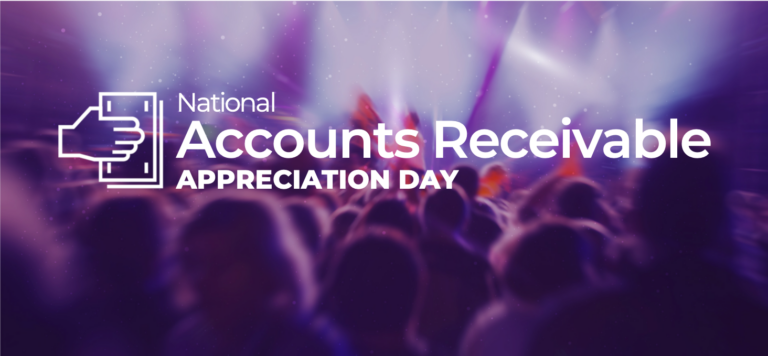Unlike traditional dunning — communications sent to buyers that remind them of their obligation to pay — dunning management focuses specifically on financial recovery efforts related to failed transactions, most commonly credit card purchase failure. For businesses that offer subscription services or rely on recurring billing for most of their income, these efforts can prove critically important to their ongoing success.
In a survey conducted by PYMNTS and FlexPay that focused on subscription-based providers, researchers found that failed credit card payments resulted in involuntary churn, the source of roughly 50% of all customer churn among these organizations. Given the broader impact that dunning management can have, in this blog, we’ll outline what effective dunning management should look like and how to do it.
Simplified dunning management
Streamlined cash flow management with Invoiced's automated A/R software
What is dunning management?
Put simply, dunning management refers to the predefined payment recovery methods triggered when a transaction fails to complete. Ideally, these efforts will be at least partially automated and typically include notifications sent to the buyer and attempts to reconduct the transaction — preferably with a more successful outcome.
How does dunning management work?
There are many reasons why a transaction might not be completed, ranging from system error to transmission interruption to an expired credit card number. And typically these issues aren’t the customer’s fault. Referring back to the previously cited PYMNTS and FlexPay study, respondents indicated that only 20% of payment failures could be traced back to the buyer.
Given that the clear majority of issues are controlled by either the seller or the underlying payment structure, the corresponding cause for the disruption will likely dictate what actual measures should be taken. That being said, most dunning management processes will look something like this:
1. Notification of failed payment
Before any follow-up action is taken, the accounts receivable (A/R) or billing system will message the customer that the transaction has failed. Commonly, these notices will include anticipated timelines for any further measures initiated by the seller and options allowing the buyer to reinitiate the payment or make alternate arrangements.
2. Repetition of notifications
Depending on the conditions outlined in the previously sent notice, the seller will wait a predetermined time to retry the transaction. The underlying billing platform will determine the number of additional attempts that can be made. But a minimum of three new attempts — one conducted every three to five days — is typical.
3. Pre-verification of payment validity
Beyond the recovery process, dunning management will also routinely involve proactive measures to prevent transaction failures. For example, one of the more common causes for failure is that the credit card on file has expired. So, as part of its dunning management efforts, a business would actively monitor the expiration dates of any credit cards saved in its billing system and subsequently send out notices to buyers to update their card information when one of those expiration dates approaches.
6 reasons why dunning management matters for your business
1. Recover failed payments
In a separate survey, again focused on subscription-based businesses and conducted by PYMNTS and FlexPay — their jointly-published Decision Guide: Tracking Failed Payments — researchers found that among participants, only 17% were monitoring their failed payments despite the broad impact these incomplete transactions could have. However, among the limited pool that did monitor and analyze these failures, these organizations lost on average 37% less revenue than the broader group. Even better, these organizations also were able to ultimately collect on 43% more of these failed transactions.
2. Boost cash flow
Any successful payment recovery will increase your overall cash levels. Through effective dunning management alongside traditional dunning efforts, you can exert greater control over when and how quickly transactions are closed, a critical element in managing your cash flow. In turn, you’ll be in a better, more informed position to build plans while strengthening your organization’s financial stability.
Your A/R automation cheat sheet
Invoiced's quick reference guide to accounts receivable automation
3. Reduce involuntary customer churn and lost revenue
If subscribers don’t want to leave, why force them? As previously stated, regarding the businesses surveyed by PYMNTS and FlexPay, these organizations could trace half of their total customer churn to subscriptions ending involuntarily due to failed payments. Referring to the Tracking Failed Payments report, the two organizations found that 9% of total revenue loss among studied subscription businesses could be traced back to failed payments.
4. Increase customer satisfaction
Few things can be more frustrating than a transaction error that isn’t your fault. Similarly, if a customer’s subscription suddenly ends without notification, their impression of your business could take a substantive hit, leaving them looking for an alternate provider. Conversely, by proactively communicating about any payment issues that might have occurred and taking measures to resolve them independent of customer effort, you can better ensure that a failed transaction will just be a minor hiccup rather than a source for customer churn.
5. Improve operational efficiency
With established, predefined payment recovery processes already in place, you can cut out unnecessary delays in correspondence or follow-up actions after a payment failure. And when these tasks are automated, you’ll realize even more efficient operations that aren’t affected by human forgetfulness or large workloads. Further, any proactive measures you take can help resolve problems before they occur, facilitating accelerated processing timelines.
6. Minimize bad debt
As payments fail for whatever reason, the likelihood that these upcoming or past due invoices will never be collected increases significantly. With more bad debt being added to your general ledger, your standing among investors, creditors, and vendors will suffer, creating unneeded complications when coordinating with these critical partners.
How can automation help improve your dunning management?
As with most recurring processes, automating your dunning management efforts can only make things run more smoothly and efficiently. Of course, not all automation platforms offer the same caliber and quality of capabilities, but typically, an effective solution will let you:
- Save time on verifications: Ideally, any payment failure will be immediately matched with a corresponding error code that triggers automatic resolution workflows and reattempts to complete the transaction — all with zero human intervention.
- Communicate clearly and consistently: With scripted notifications and a clear messaging cadence, you can rest assured that your customers are promptly and properly notified of any potential issues. Further, multichannel communications will increase your message’s likelihood of being seen.
- Offer alternative payment options: Assuming an actual, larger issue with the original payment method — such as an expired card — your automated billing platform or payment portal should offer the ability to seamlessly shift to a different source that can avoid this challenge.
- Keep better records: Automated platforms tend to generate a large amount of metadata associated with each transaction or subscription — information that can be leveraged to create richer, more nuanced financial reports and simplify the documentation requirements of system audits.
- Streamline debt collection: Ideally, your dunning management solution will integrate seamlessly with your more traditional dunning efforts. So, as customers fail to pay on time due to transaction failures, your established chasing efforts can be initiated automatically.
- Prevent future failures: By proactively vetting the payment information on file independent of human effort, an automated platform can identify and even take measures to resolve a potential issue before it can disrupt normal business operations.
Automate your payment recovery process with Invoiced’s dunning management software
Often, closing out your outstanding customer debts and resolving any existing payment challenges is a matter of persistence. The more reliable and routine your A/R operations are, the more likely they’ll succeed, getting your business the money it’s earned. And the right automation platform — like our Accounts Receivable Automation software — can make achieving this consistency much easier.
Our Smart Chasing technology will pursue the payments owed to you, whether by closing the loop on failed subscription renewals or keeping outstanding ad hoc payments at the front of your customers’ minds. Our integrated payment portal makes it easy for customers to pay their bills, update their existing account information if it becomes outdated, or choose an entirely different channel to close out their outstanding transactions.
To learn more about our automated A/R offering, schedule a demo today!




